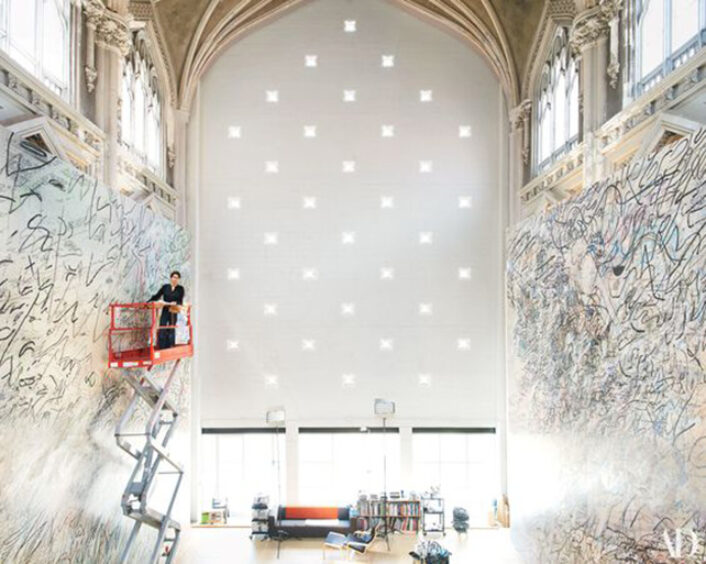Fine Art
Oscar Murillo
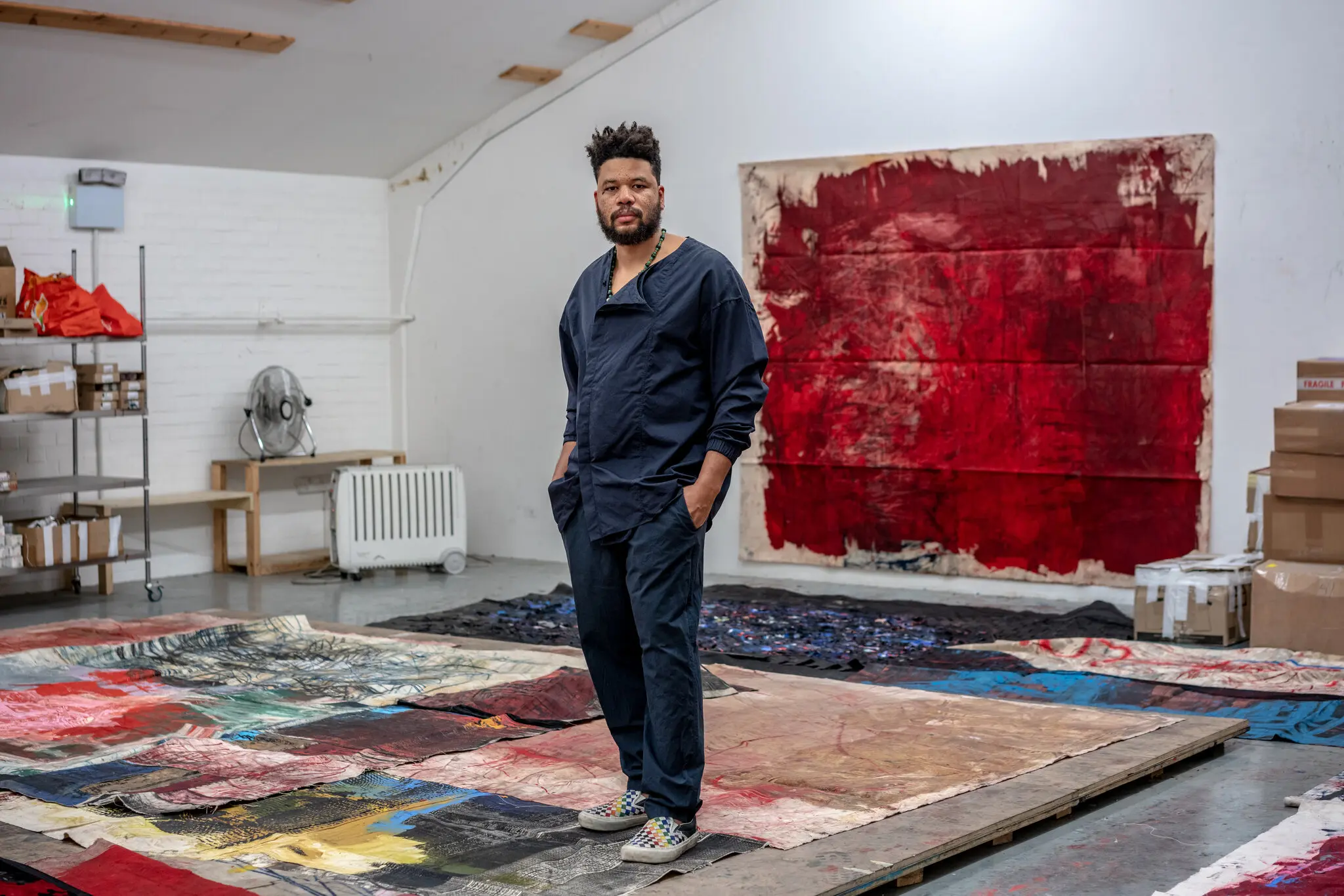
Murillo in his London studio, in the background is one of his stunning, vivid canvases.
Image courtesy of: The New York Times, photographed by: Andrew Testa
Oscar Murillo is a prolific painter who uses the theme of “infiltration” to inspire his large-scale canvases. The Columbian-born and raised, London-based artist has become familiar to audiences for a body of work that uses his personal experiences and his childhood as a way to explore the (courtesy of The Guardian) “conditions and dynamics of globalization and cultural exchange.”
Murillo wholeheartedly believes that there is no separation between art and life; he also believes that (courtesy of Time Magazine) “art is born out of trauma, and that solace can be found through creation.” If that is indeed true, than Murillo’s life is full!
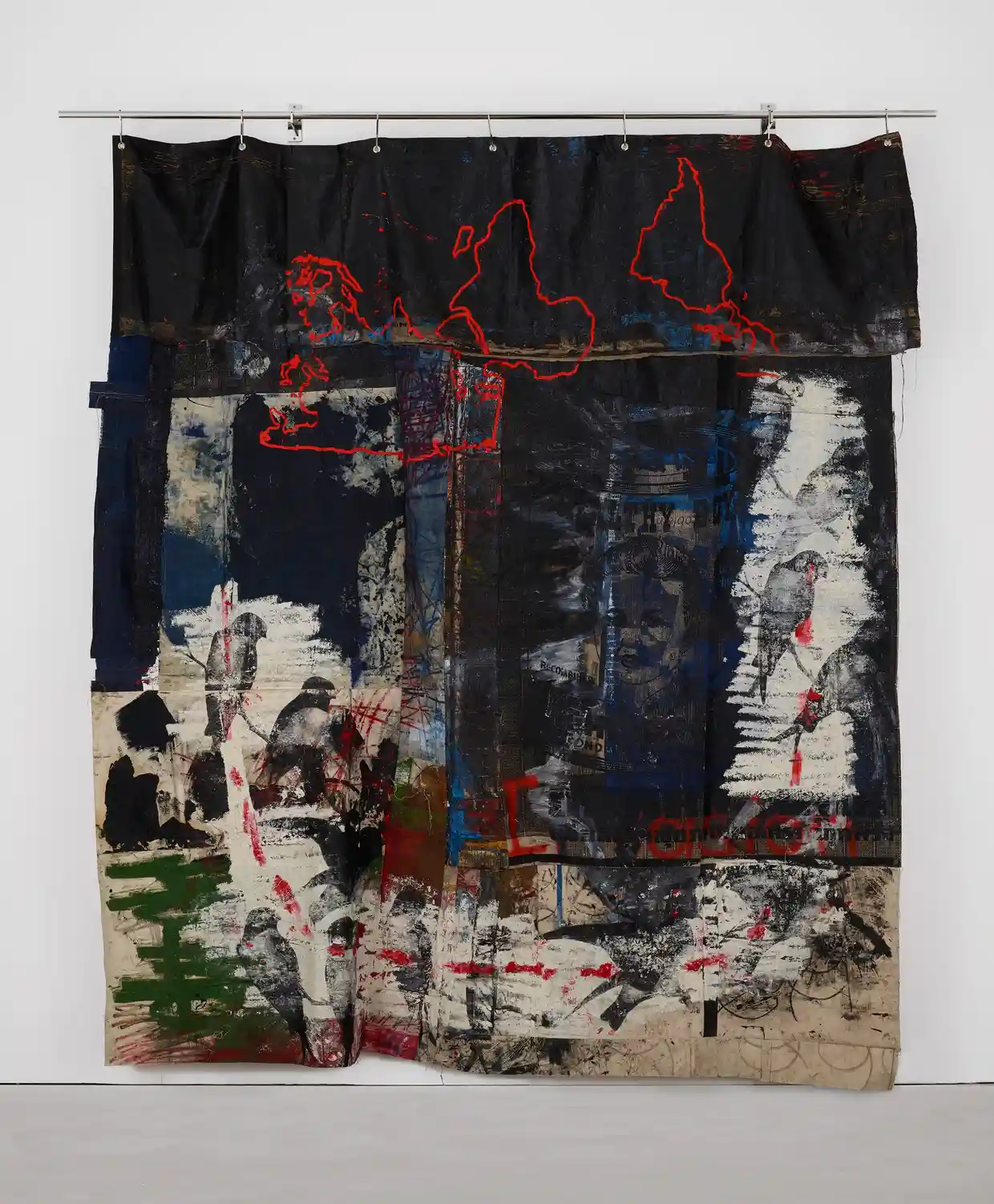
“Violent Amnesia,” 2014-2018. Installed at Kettle’s Yard in Cambridge, 2019.
Image courtesy of: The Guardian, photographed by: Matthew Hollow
Moving from La Paula, Columbia to East London at the age of 11, Murillo felt displaced and lost. Without being able to communicate in English, the artist began scribbling which lead to painting. He describes feeling confused in his new environment and as such, he painted as a way to portray his emotions; the pieces drawn were part of a beautiful show at Kettle’s Yard in London in 2019. As an added bonus, there is a sound piece narrated by Murillo’s father in Spanish which explains the process of immigrating to London.
Called “Violent Amnesia,” the exhibition’s keynote painting was made over the course of four years. The large canvas hangs like a curtain from a rail next to a world map that is devoid of both Europe and the United States. Also noted are birds and foreign currency. Leaving almost his entire family behind, Murillo says that he cried the entire way from Columbia to London; however he did recognize the sacrifices his parents made for him to have a better life.
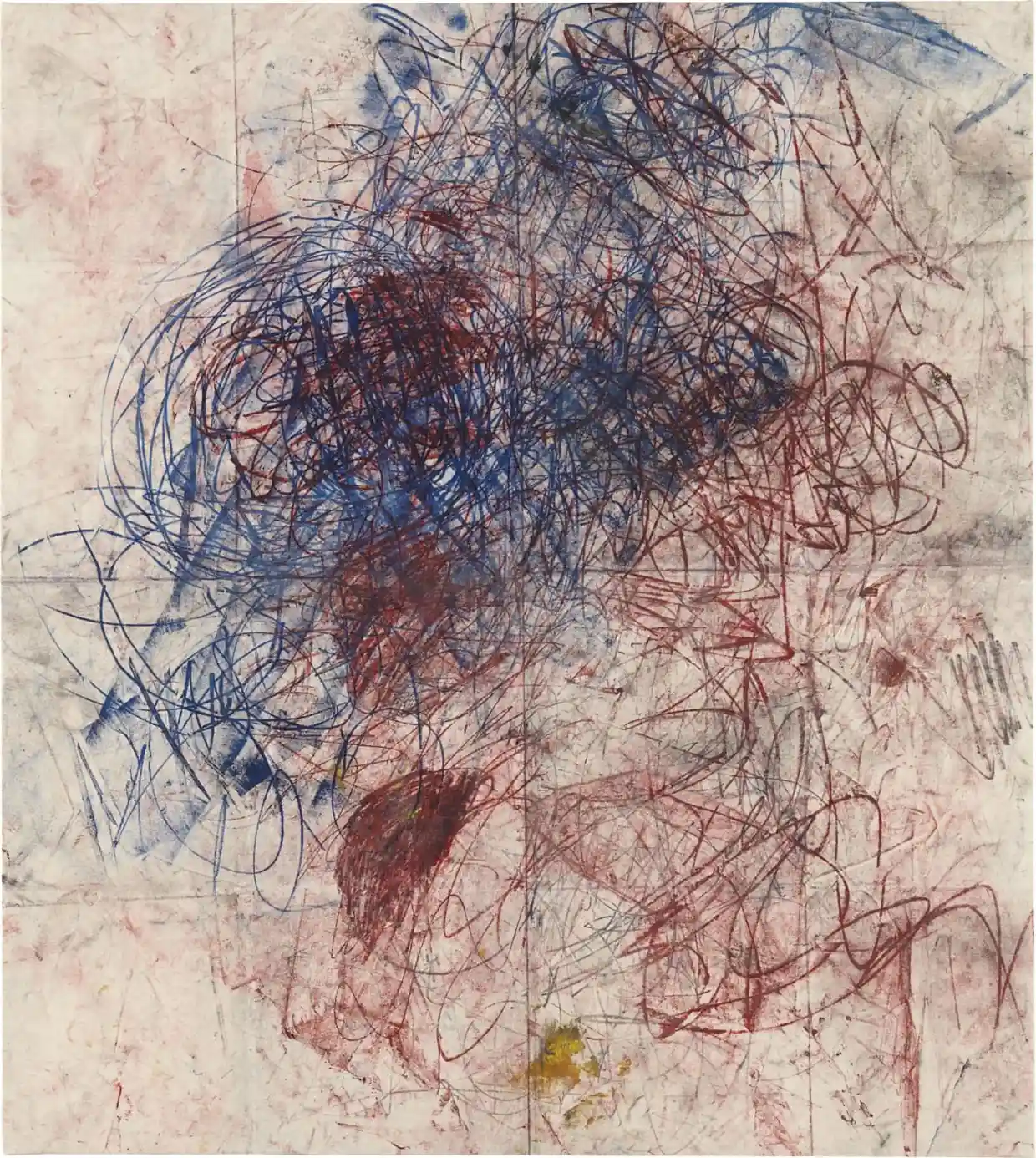
“Untitled (Drawings off the wall); the painting sold for $400,000 rather than to the $30,000 estimate.
Image courtesy of: The Guardian, photographed by: Zach Feuer
Murillo worked as a cleaner to earn an M.F.A. from the Royal College of Art; however after graduation, he became “just another struggling artist.” Meeting Tom Cole was a turning point; the co-founder of the London gallery Sunday Painter, Cole was instantly drawn to Murillo’s personality. Quickly, Cole realized that Murillo’s art had an important social and political aspect… something that was missing from a lot of art at the time.
Procuring his first show, Murillo became interested and personally vested in “infiltrations.” The very elementary infiltration is art-world insiders and Columbian-born cleaners, another is an expensive painting with the word “tamales” hanging in a multi-million dollar home. Murillo is considered unique in that his art has both critical and commercial appeal. With the help of Donald and Mira Rubell, the infamous contemporary art, Miami-based collectors, Murillo has become an “art world phenomenon.” It did not hurt that in 2011, a Phillips auction estimated a painting at $30,000… it sold for over $400,000.
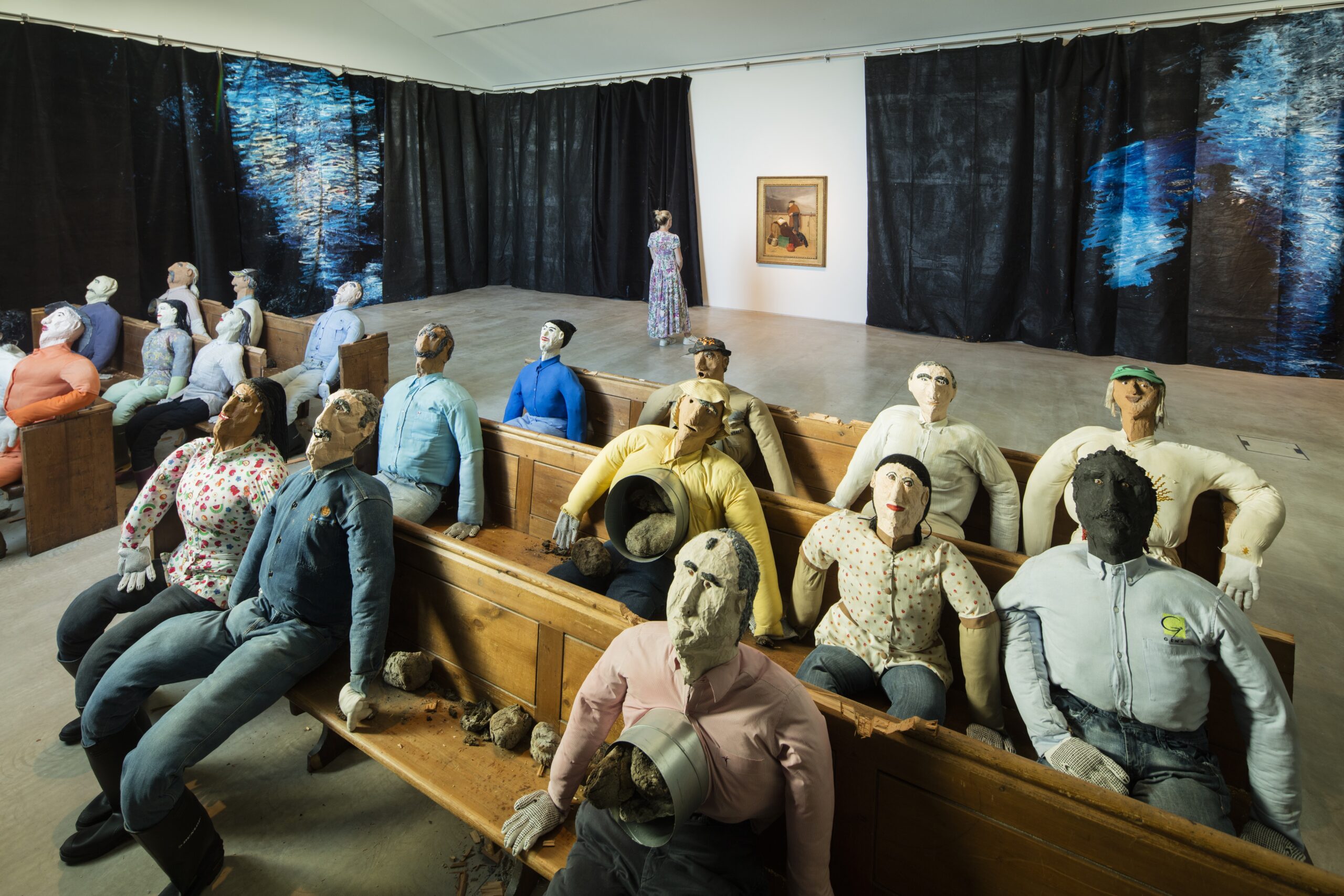
This piece won the 2019 Turner Prize along with the three other shortlisted artists. The four artists banded together as an expression of solidarity in the midst of the world’s political upheaval.
Image courtesy of: ArtNews, photographed by: David Levine
One of Murillo’s most important bodies of work was “New,” an exhibition that was presented at David Zwirner’s Paris gallery in 2020. The paintings were made during the beginning of the pandemic while the artist was quarantining in Columbia. About the pieces, the gallery’s website said, “These works respond to the fraught social and political landscape within which they were created, while further developing ongoing subjects of concern for the artist. The heightened formal and visual intensity of these paintings represents a point of departure in Murillo’s art that speaks to the anxieties and conditions of the present moment with newfound urgency.”
This was Murillo’s sixth solo exhibition at David Zwirer, and this year marked a decade since he was first represented by the gallery. One of Murillo’s most impressive accolades was receiving the Turner Prize in 2019. The award is one of the best known prizes for visual arts; Murillo received it “as a collective” along with the other three nominated artists including Lawrence Abu Hamdan, Helen Cammock, and Tai Shani.
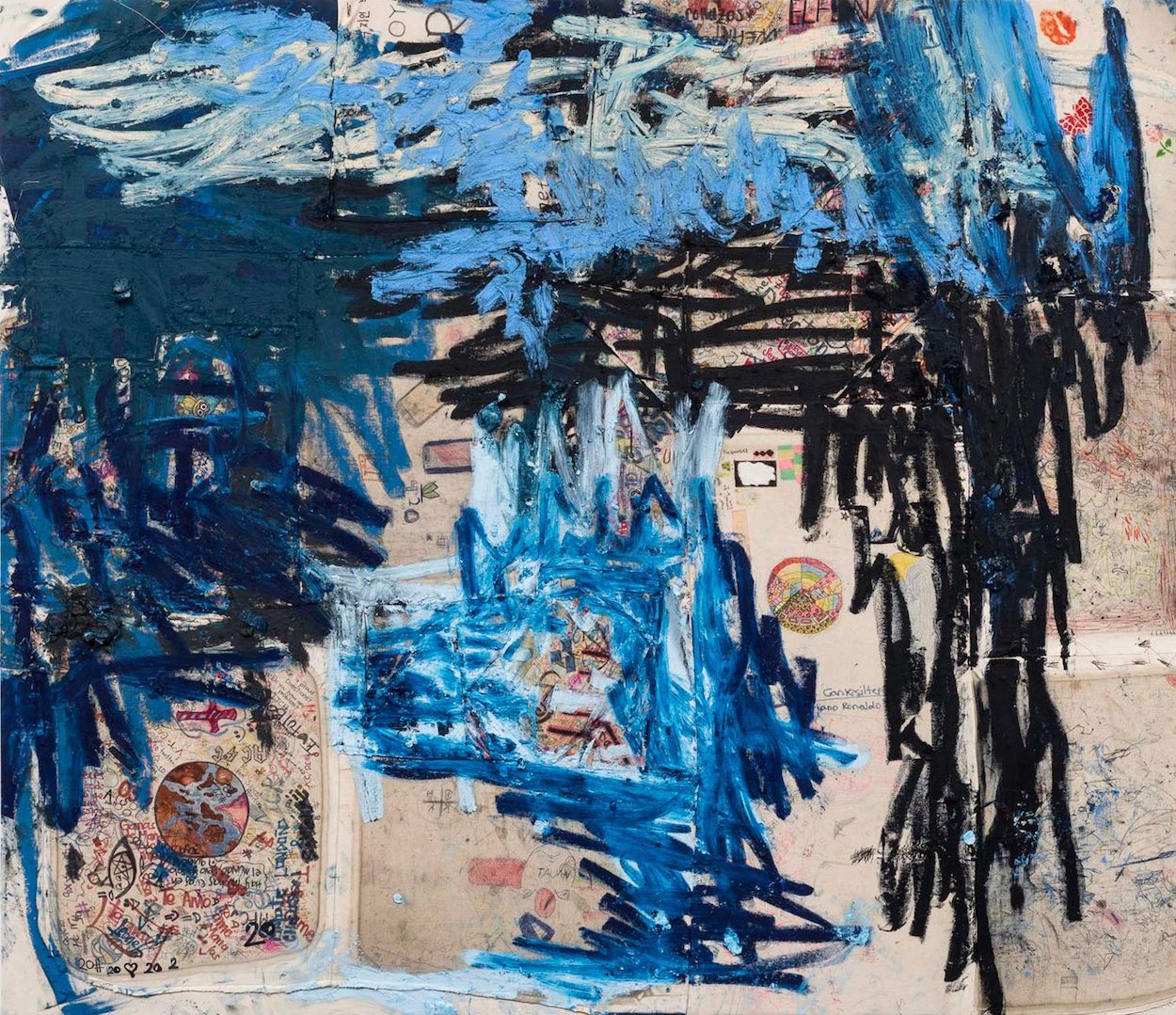
A canvas from the “Frequencies” project.
Image courtesy of: Surface Magazine
Part of the reason we love Murillo is because of “Frequencies,” Murillo’s project that dates back to 2013 when the artist sent pieces of raw canvas to schools around the world. Murillo referred back to the wooden desks he used as a student in Columbia, the etchings on the wood told many stories. His only request was that the canvases be glued to a school-desk for a semester so that many hands could work on them if they desired. Over the past ten years, more than 400 schools in 35 countries have been a part of this inspirational project.
The hope is that students feel free to mark up, draw, and write on these temporary surfaces. Following six months of “work,” the canvases are sent back to Murilllo and added to his collection. Courtesy of Surface Magazine, Murillo hopes that these coverings portray “the unconscious creative energy of students and the idea of breaking free from the confines of traditional learning environments.” A fabulous idea indeed!
